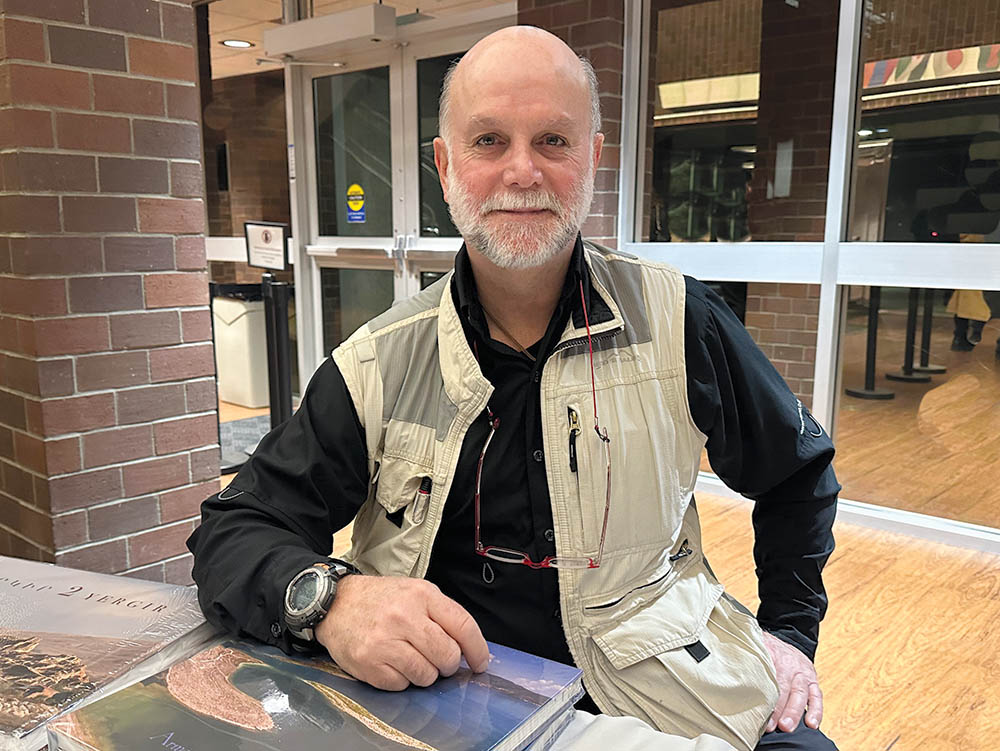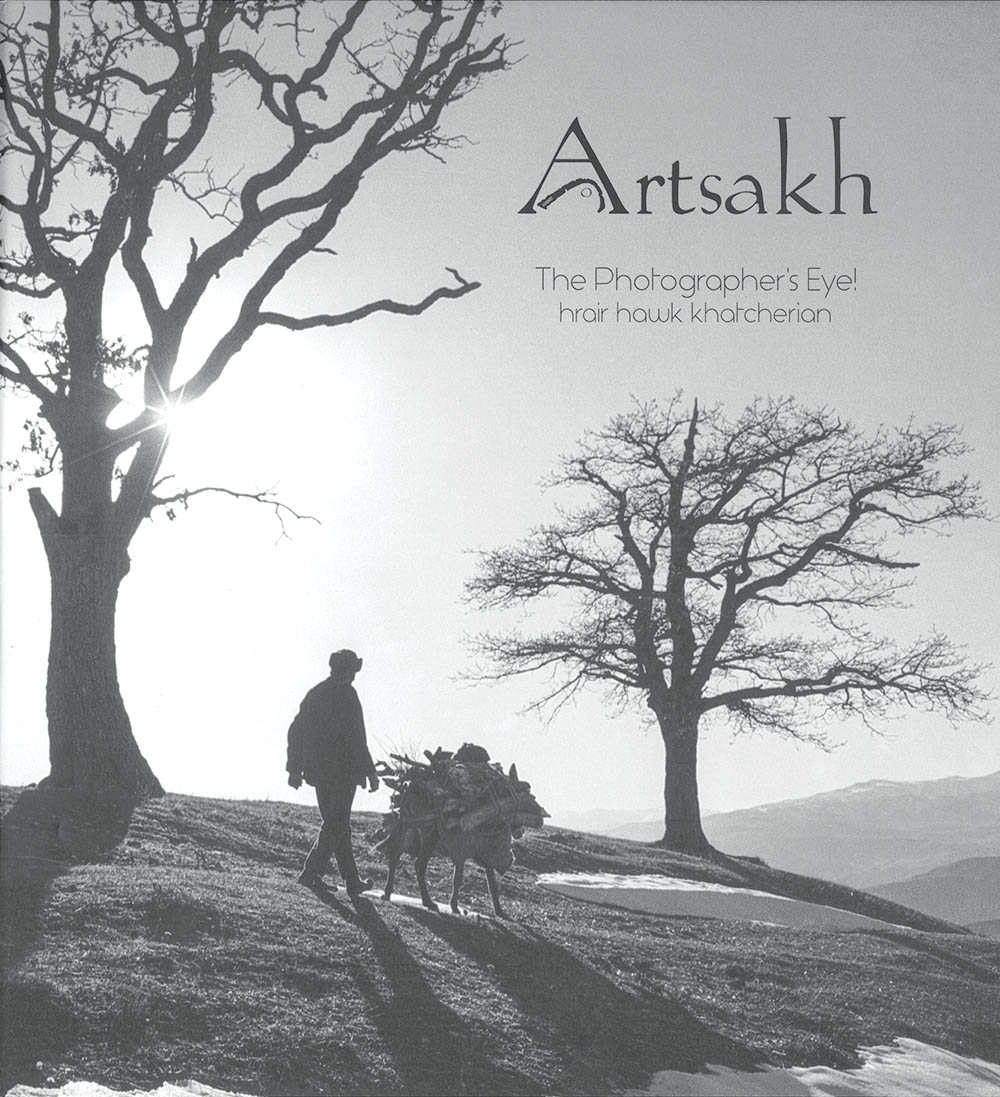
Photo: ASP Archive
Natalie Agazarian
Editor
Hrair Hawk Khatcherian was born with an artistic eye, and he used that gift to travel to his homeland and capture its beauty, history, and character. His photos transcend the lens, portraying great emotions, harsh realities, and cultural depth. During a series of visits to Artsakh starting in 1988, Hawk compiled years of images into a book called Artsakh: The Photographer’s Eye!.
Khatcherian traveled from Montreal, Canada, to present a talk on his new book on Friday, February 3, 2023, as a part of the Armenian Studies Program Spring Lecture series.
Khatcherian was born in Beirut, Lebanon, and later began to visit Artsakh and Armenia in 1988. He has actively participated in various activities of the Armenian Diaspora related to the Artsakh Movement (Karabakh). For almost three decades, Khatcherian has been presenting exhibitions, conferences, and photographic lectures all around the globe, making Artsakh, Armenia, and Western Armenia an accessible reality for all. His photographs have appeared in numerous magazines, newspapers, books and publications.
Khatcherian began his presentation with a five-minute video showing a behind-the-scenes look at his photography process. There were many aerial photographs and montages of the beautiful monasteries and breathtaking landscapes scattered throughout the regions of Armenia and Artsakh. In fact, Khatcherian informed the audience that he once flew over Artsakh and Armenia eight times in order to obtain the perfect angles for his photos. He even enlisted the help of local residents and clergy to access hidden sites and enter war zones to capture the reality of the wars over the years.
Khatcherian photographed many monasteries in Artsakh, whose beauty demonstrate the craftsmanship of the Armenian people over time and the traditional Armenian style of architecture. Among those that Khatcherian photographed was Amaras Monastery, the first Armenian church built in Artsakh in the fourth century. This monastery also served another purpose – Mesrop Mashtots established the monastery as the first institution to teach the newly developed Armenian alphabet. Other monasteries he captured included Gandzasar and Yeghishe Kouys. During his travels, Khatcherian observed that the remote location of many of the monasteries throughout Artsakh and Armenia contributed to their survival. He noted that “the road it takes” to reach the monasteries can be so taxing that many people simply leave them alone.
 At times Khatcherian went to extreme lengths to take some of the photos included in his book: photos of the Lachin Corridor in various seasons, Armenian fighter jets at their base, and even photos of converted Azeri weapons used during the war in 1992. Khatcherian told the audience that in order to get the best photographs that he had often been in dangerous situations, including once where he had been “only a 100 feet away from Azeris.” He also made sure to utilize his artistic abilities to achieve the best photo possible. Khatcherian would carry various forms of equipment with him and stay in one place until the natural lighting was suitable. He used the example of his shot of Gandzasar monastery, where he waited all day until about 2:00pm, to capture the khatchkar [cross-stone] on the west facade. This monastery also contains illuminated manuscripts and is referred to as the “crown jewel” of monasteries.
At times Khatcherian went to extreme lengths to take some of the photos included in his book: photos of the Lachin Corridor in various seasons, Armenian fighter jets at their base, and even photos of converted Azeri weapons used during the war in 1992. Khatcherian told the audience that in order to get the best photographs that he had often been in dangerous situations, including once where he had been “only a 100 feet away from Azeris.” He also made sure to utilize his artistic abilities to achieve the best photo possible. Khatcherian would carry various forms of equipment with him and stay in one place until the natural lighting was suitable. He used the example of his shot of Gandzasar monastery, where he waited all day until about 2:00pm, to capture the khatchkar [cross-stone] on the west facade. This monastery also contains illuminated manuscripts and is referred to as the “crown jewel” of monasteries.
Another theme throughout Khatcherian’s book is the prevalence of khatchkars throughout Armenia and Artsakh. Armenia has a deep-rooted history, and one particular khatchkar that Khatcherian photographed shows linkage to the 13th-14th century Armenian Kingdom of Cilicia. The khatchkar was found in the Lachin region, and Khatcherian made sure to take accurate measurements and carry reflectors to capture the nuances of the carvings.
Through his frequent travels to the region, Khatcherian was able to capture the same location over time, and compare the photos in his book. One side-by-side photo depicts over thousands of khatchkars in Nakhichevan, and another of the same spot with over 4,000 of them later destroyed by Azeris. Khatcherian went on to discuss the lack of interception from the United Nations in regards to the relics being destroyed and urged for more awareness of the obstructions.
Beyond simply taking scenic and historic photographs, Khatcherian most importantly captured the character of the Armenian people. “Even with all the blockades, the Armenians are still smiling,” stated Khatcherian. Multiple candid shots of resilient villagers and courageous soldiers demonstrate the unity, faith, and tradition the Armenian people have maintained for generations.
Artsakh: The Photographer’s Eye! serves as a tangible visual for the community. It contains the regions kept and lost, highlighting its cultural and natural beauty from various angles. Khatcherian created this photography book to depict the realistic history of Artsakh and Armenia, because as the saying goes, “a picture speaks a thousand words.”
 Hye Sharzhoom Armenian Action
Hye Sharzhoom Armenian Action